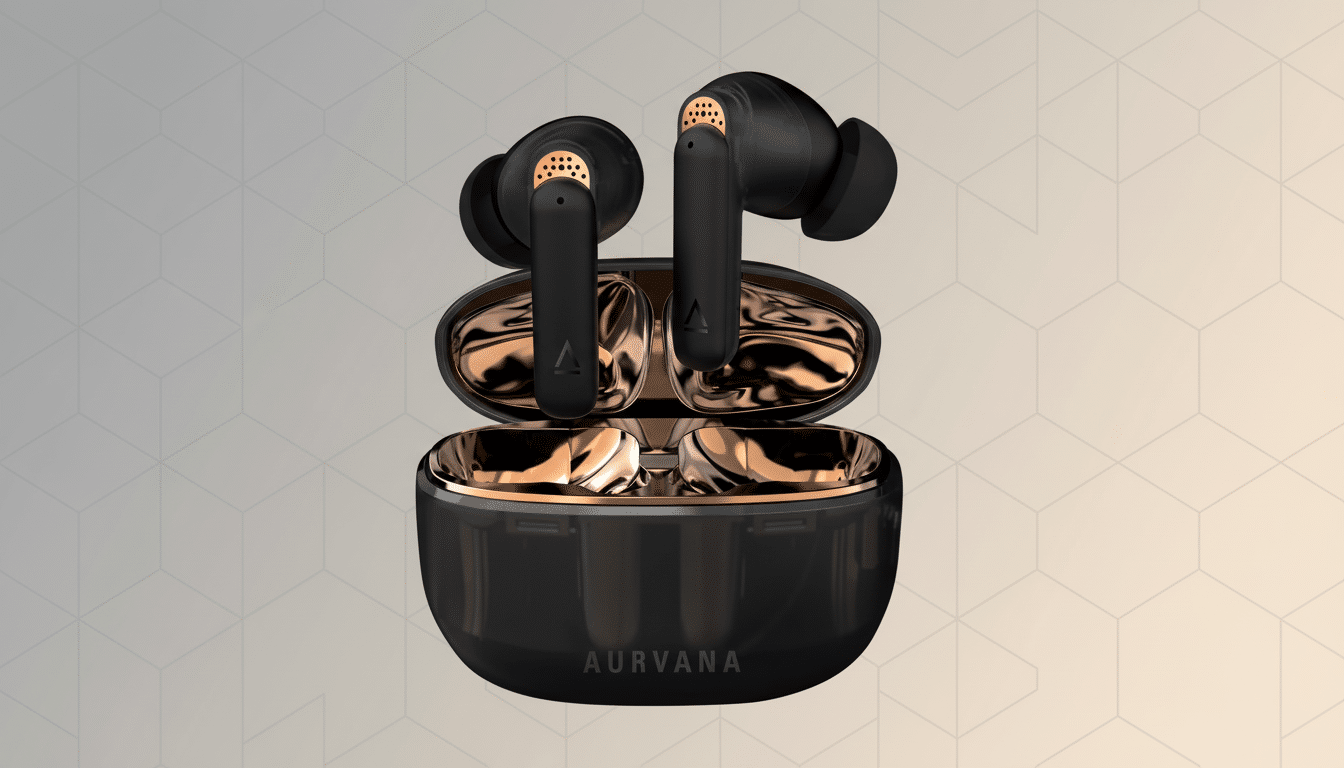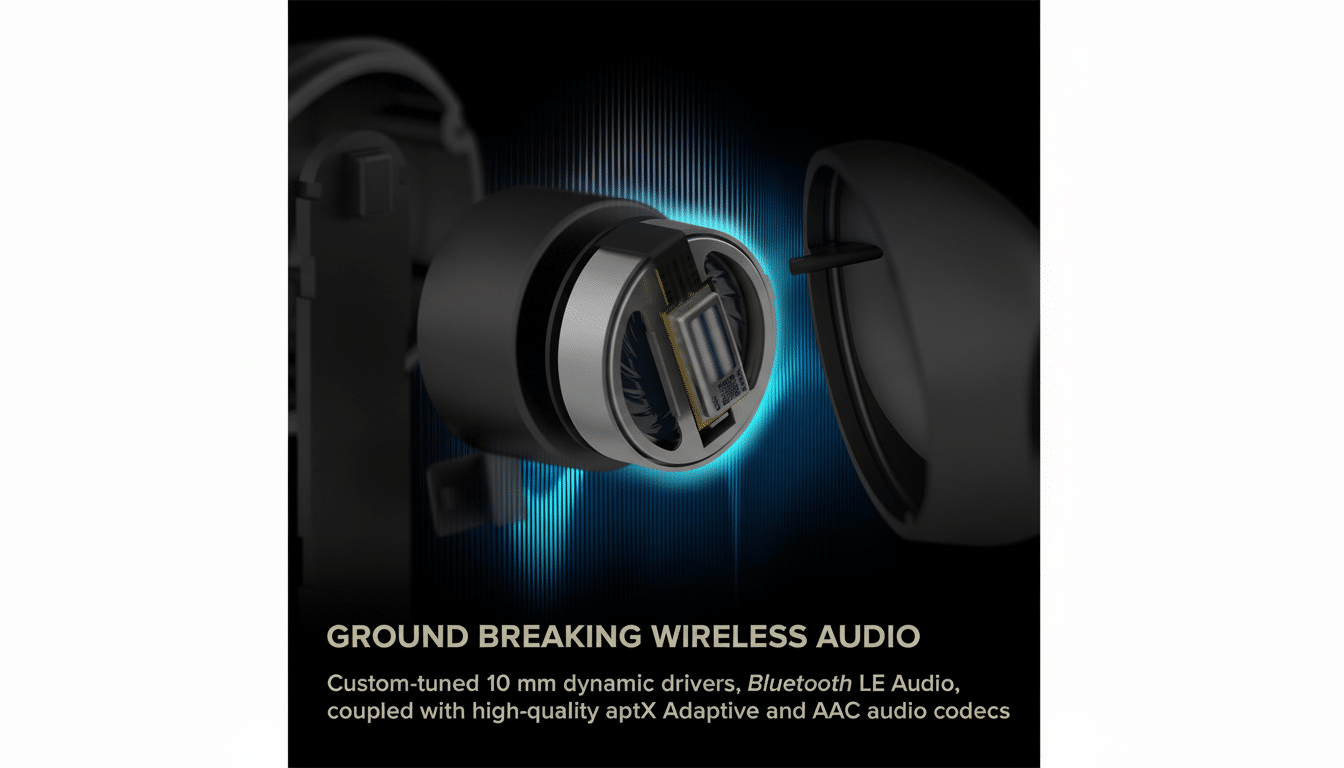I put on a prototype pair of smart glasses outfitted with xMEMS solid‑state speakers and minuscule active cooling fans, and it wasn’t long before I was wishing my daily drivers — the Meta Ray‑Bans — had the same tricks. The contrast was not flashy or gimmicky. It was the sort of silent revolution‑upgrade that makes wearables thinner, cooler, and more comfortable without eliminating what we actually use.
Why xMEMS Changes the Fit and Feel of Smart Glasses
Smart glasses struggle with bulk. When you pack cameras, batteries, processors, and speakers into spectacles, it can easily push weight toward 50 grams (about where most Ray‑Ban models have clocked in), instead of the mid‑ to low‑30s grams for standard acetate frames. xMEMS Labs says the comfort “sweet spot” for smart glasses is a weight of about 30 grams, a goal that suddenly looks within reach with the company’s micro‑speaker platform.
- Why xMEMS Changes the Fit and Feel of Smart Glasses
- The Audio Trade-offs in Real Life Use of Smart Glasses
- Cooling Fans That You Can’t Hear in Everyday Wear
- Smart Glasses Need Thermal Headroom More Than Most Devices
- What It Means for Ray‑Bans and the Market
- What I Don’t Know Yet About This xMEMS Approach

The solid‑state driver I auditioned — given the code name of Sycamore — replaces a conventional voice‑coil with a piezoelectric MEMS actuator. Executives at xMEMS estimate that it is about 70% smaller and 90% lighter than traditional drivers. This is meaningful because any millimeter regained in the temple arms could be invested in sleeker styling, larger batteries, or more effective thermal pathways. As soon as I slipped them on, the prototypes felt a bit less front‑heavy than most camera‑equipped frames that I’ve worn.
They also switch on and off more quickly than coil speakers (which need to be brought through their magnetic center point), improving transient response, which can help with clarity of dialogue — a good thing in open‑air audio where bass will always be physics‑limited by having no seal. In practice, the sound profile mainly favored speech and system prompts — just like most people actually use smart glasses: podcasts, calls, turn‑by‑turn cues and assistants.
The Audio Trade-offs in Real Life Use of Smart Glasses
The xMEMS‑powered frames didn’t pump as hard in the low end as my Ray‑Bans, either, and they’re unlikely to replace a good set of earbuds. But they were cleaner for voice, with less muddied mids at moderate volumes. I was able to take in a 1.2x podcast in a noisy cafe without straining the level. Music was fun, in an ambient, chill sort of way — friend‑of‑the‑yoga‑class mix tapes as opposed to intense listening affairs.
The leakage was consistent with other open‑ear designs: decent if kept at a responsible volume for those times you must (reluctantly, of course) work in an office. For commuters and cyclists, the neutrality and clarity are a plus. And, because those drivers are smaller and lighter, they place a proportionately smaller mechanical load on the temple tips, which contributes to long‑wear comfort for glasses wearers like me.
Cooling Fans That You Can’t Hear in Everyday Wear
The other foe of smart glasses is heat. Film a couple of minutes of video, or even trigger an on‑device assistant, and most frames gently throttle to ensure the skin’s temperature remains in the “safe” zone while preserving battery health. xMEMS’ solution is a 1mm‑thick “fan‑on‑chip” actuator called µCooling that sucks cool air through micro‑vents and blows warm air out the other side — basically, a laptop fan shrunken for eyewear without any hiss.
The prototypes were noticeably cooler, though, on the nose bridge and temples during back‑to‑back capture tests with µCooling turned on. I also tested the actuator in the gaming earphones it’s launching with and, there too, it quickly cut down on that clammy, moisture buildup feeling. The noise floor was mostly nonexistent; in normal room conditions, I could not be sure of hearing fan noise over ambient sounds.

Smart Glasses Need Thermal Headroom More Than Most Devices
Thermal budget = capacity. Today’s smart glasses platforms, such as Qualcomm’s Snapdragon AR1, offer on‑glasses video recording, scene understanding, and near‑instantaneous assistant response times. Those are features that actually sap power in a minuscule little box. Now, most brands are doing software throttling and some conservative power limit. Active airflow (albeit of the micro variety) is the key here, because cooling even a tiny bit can delay or limit throttling, which will maintain your frame rates and keep skin contact temperatures within a given comfort zone.
We’ve seen the same thing in phones and PCs: vapor chambers, tiny fans — these spread performance bursts into sustained performances. ASUS and Lenovo gaming handsets implemented active cooling literally years ago, while higher‑end offerings from Samsung and others employ bigger vapor chambers to manage heat. Glasses need an analog down to the gram, instead of the kilogram.
What It Means for Ray‑Bans and the Market
If component makers are able to offer more lightweight speakers and nearly silent active cooling without killing battery life, the next wave of smart glasses can slim down while doing more. That’s the update I want on my Ray‑Bans: less bulk, clearer voice audio, longer sustained recording, and frames that don’t heat up in the sun. The cost equation will dictate how rapidly this proliferates, but the integration path is simple — substitute drivers, add micro‑vents, and muck with airflow until it sounds great.
Analysts at rival research firms Canalys and IDC have observed sustained interest in wearables that incorporate audio, cameras and assistants. For the likes of Meta, Samsung and any others probing at everyday AR prompts, a change like that — saving themselves 15‑20 grams and giving them more thermal headroom overall — could be the difference between “fun demo” and “daily essential”.
What I Don’t Know Yet About This xMEMS Approach
There are open questions. When routing air near optics, durability and ingress protection count. Any impact on the battery life would need to be verified; while efficient fans are low‑power, they still consume some power and nobody wants lower runtimes. Acoustically, I’d love to see some form of beam‑shaping or clever venting to further reduce leakage in quiet environments. And for wearers of prescription lenses, the overall system weight with actual lenses — not empty demo frames — is still the yardstick.
Still, the direction is right. Solid‑state speakers round out the experience with mass that fills the room and micro‑cooling that sustains performance throughout. After trying on the prototypes, it’s not better cameras or flashier overlays that I want. I desire smarter lenses that feel like glasses — light, cool and useful. xMEMS just showed us how we could get there.

